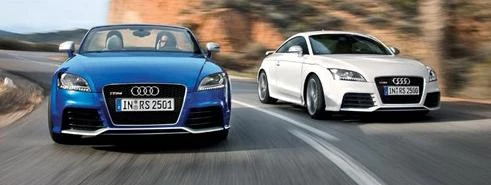● Successor to RS 2: RS 4 (1999-2001 / 2006-2008 / 2012)
Shortly after the birth of the first generation of RS 2, the car series naming method of Audi car factory began to change. From the former Audi 80, Audi 100, Audi 200 and so on, its models have become Audi A4, Audi A6, Audi A8 and other levels. At that time, the new generation of A4 (B5 platform) has replaced the predecessor of RS 2 80 model and become the backbone of Audi. So in 1999, when Audi plans to continue to develop RS model, it was not appropriate to apply RS 2 again, so Quattro Limited Company launched RS 4, a ultimate performance vehicle based on A4 Avant at that time.

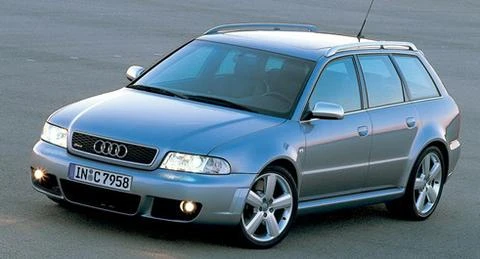

The engine of the first generation of Audi RS 4 is upgraded from the 2.2L in-line 5-cylinder engine of Audi RS 2 to the 2.7L V6 dual turbo engine, which is matched with a 6-speed manual transmission, with 0-100km/h acceleration of 4.9s, and the top speed is limited by the electronic system at 250km/h. This generation of RS 4 uses a 255/40 ZR18 tire with a larger size, which has better handling in actual driving.

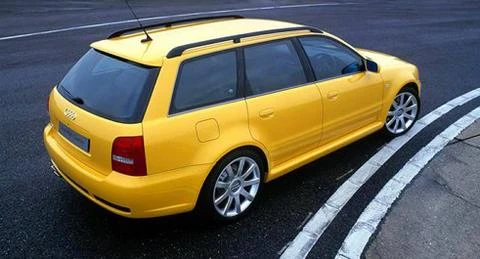
At that time, the performance of the Audi RS 4 has been fully able to compete with the supercars at that time. Some foreign automotive media once conducted comparative tests on the RS 4 and the Ferrari F355, and the result was that RS 4 won by a big score on the mountain road, which surprised the whole world. Also because of its superior ability, it was sought after by performance fans all over the world. However, the price of more than one million RMB was out of everyone’s reach. In addition, may be the reason why audi have a special interest to station wagon, the first generation of RS 4 only has the choice of the touring car version, which also set up a completely different high-performance car style from BMW and Mercedes Benz, becoming a famous car generation that was very classic at that time.


In 2006, the second generation of RS 4 was released. A 4.2L V8 engine was used in it, and the in-cylinder direct injection technology was added. At 7800 rpm, it can generate the maximum power of 420 horsepower, and the maximum torque can reach 430nm / 5500 rpm. It is still matched with a 6-speed manual gearbox, equipped with 255 / 40 ZR18 tires, and the acceleration is still 4.9 seconds at 0-100km/h. This RS 4 is available in two-door soft top convertible version and five-door travel version.

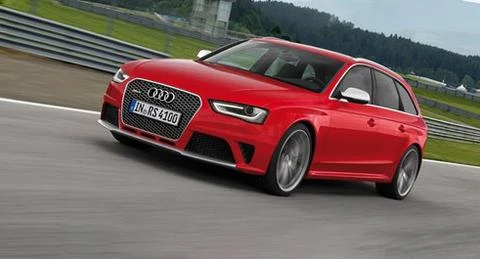
In addition, at the Geneva Auto Show this year, Audi has displayed a brand new Audi RS 4, and the specific time for its launch has not yet been determined. In terms of power, the new brand Audi RS 4 Avant is still equipped with a 4.2L V8 engine, with a maximum power of 450 horsepower and a maximum torque of 430nm. The transmission adopts the S tronic automatic transmission and equipped with Quattro all-wheel drive system. It is estimated that the acceleration time of RS 4 Avant 0-100 km/h is 4.7 seconds and the maximum speed is 280 km/h.
● Audi family’s strongest production car: RS 6 (2002-2004 / 2008-2011 / 2012-present)
In 2002, Audi released RS 6, which known as the strongest mass production vehicle of Audi at that time. At that time, RS 6 was the mainstay of Audi’s high-performance, a high-performance car developed through the Volkswagen C platform. Not only was its outstanding performance, but all kinds of luxury equipment on A6 was reflected in RS 6. In terms of model positioning, the direct competitors of RS 6 were BMW’s M5 and Mercedes Benz’s E55 AMG.




At that time, Audi RS 6 was equipped with a 4.2-liter V8 dual turbo engine, which was the second most powerful engine in the Volkswagen Group (the first was Bentley W12 engine, with a maximum power of 650 horsepower). The maximum power of this engine reached 450 horsepower, with a maximum torque of 560 nm. It was matched with a 5-speed Tiptronic manual automatic integrated transmission, with an acceleration time is 4.7 seconds at 0-100 km/h , while the ultimate speed is still limited to 250km/h. At the same time, the Avant version of RS 6 is launched, with the performance and configuration completely consistent with the four-door version.

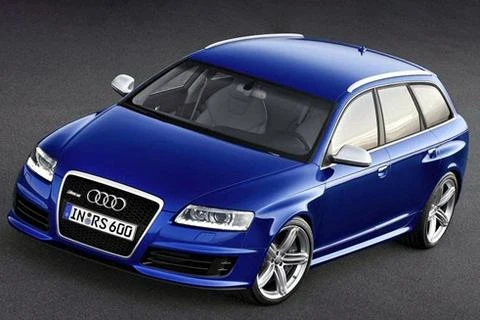
Then in 2007, the second generation of Audi RS 6 was officially released. The Audi RS 6 uses a 5.0L V10 twin turbo engine. The engine prototype comes from Lamborghini Gallardo, with the maximum power of 580 horsepower and the torque of 650 nm. It only takes 4.6 seconds to complete 0-100 km/h acceleration. The top speed is limited to 250 km/h, and after the speed limit is lifted, the top speed may exceed 300 km/h barrier, and its performance has surpassed the Audi S8.


Of course, now that the Audi C6 platform has come to an end and the Audi A6 with the new C7 platform has been officially launched. In this case, the new generation RS 6 is also under in the process of close research and development. According to overseas media reports, the new generation Audi RS 6 will be equipped with a 4.0-L V8 twin turbo engine from Audi S8. Audi engineers have also recalibrated the engine to give it a maximum power of 580 horsepower and a maximum torque of 700 nm. On the driveline side, there is likely to be an 8-speed automatic transmission or a 7-speed dual clutch transmission, with an expected 0-100km/h acceleration time of less than 4.5 seconds for the RS 6.
● TT RS: Assembled in foreign countries (2009-present)
In 2009, Audi TT RS appeared at the Geneva Auto Show. It is worth mentioning that all the previous RS series models of Audi were developed by its subsidiary Quattro and completed in nekasum, Germany, but Audi TT RS is the first RS series cars assembled in Hungary. This TT RS was developed to compete with the Lotus Evora, Nissan 370Z and Porsche Cayman S.


As for why it is produced in Hungary, the reason is to keep improving. At the same time, Quattro company only produces one “RS” model. Therefore, Quattro company, which is still producing RS 6 in 2009, hand over the designed TT RS model to Audi subsidiary in Hungary for assembly. In fact, vehicles produced by Quattro can be identified by VIN (vehicle identification number). Vehicles produced from Audi’s head office begin with “WAU…”, while Quattro’s vehicles begin with “WUA…”.


In appearance, the TT RS is quite aggressive. The front bumper is designed with exaggerated air inlets, with a black cross grille and honeycomb grid. The rear of the car is equipped with a fixed tail. The double oval exhaust pipe passes through the honeycomb grid at the bottom of the bumper, with an air diffuser at the bottom. Although it may be difficult for many people to distinguish the difference between TT RS and TTS in appearance, in terms of performance, TT RS is enough to outdo 99% of cars on the street.


Audi TT RS is equipped with a turbocharged 2.5L in-line 5-cylinder engine, which provides an amazing maximum power of 335 horsepower and maximum torque of 432 nm, which is 100 nm more than the already powerful TTS. In the driveline system, TT RS was equipped with only one 6-speed manual transmission at first. In 2010, the version of 7-speed S-Tronic dual clutch transmission was added. With the support of such equipment, the acceleration time of 0-100 km/h in TT RS automatic transmission was only 4.6 seconds, and the maximum speed was 250 km/h (electronic speed limit).


Because the torque of TT RS is too strong, so TT RS only provides a single manual gear model at first. The previous 6-speed S-Tronic gearbox can’t bear such a large torque. After Audi launched the 7-speed gearbox, Audi didn’t hesitate to install it on TT RS. In terms of competitors, the main competitor of TT RS is the Porsche Cayman S. In the UK market, the car has been sold to about 700,000 RMB, which is comparable to the Porsche Cayman S.
● The only RS currently on sale in China: RS 5 (2010-present)
In 2010, Audi released the Audi RS 5 and Audi RS 3 successively. These two models are also Audi’s heavyweight products. The Audi RS 5 was released at the 2010 Geneva Auto Show, similar to other Audi RS models. The RS logo on the front grille and the huge air intakes on the left and right sides below the bumper are the symbols of its identity.

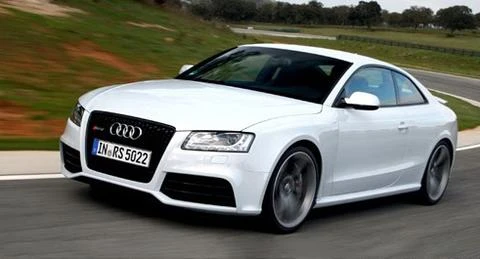

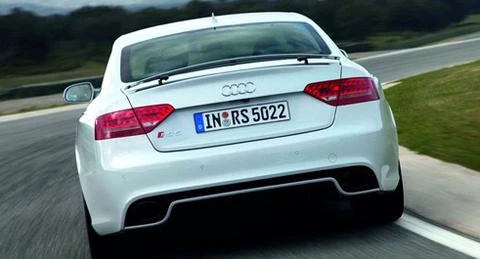

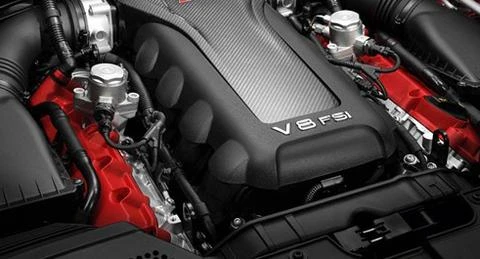
In terms of power, RS 5 is equipped with a 4.2L V8 naturally aspirated engine. The engine is matched with Audi’s 7-speed S-Tronic dual clutch transmission. The acceleration time of RS 5 0-100 km/h is 4.6 seconds, and the speed limit is 250 km/h by the electronic system (RS 5 is expected to break through 280 km/h after lifting the limit). According to the official data of Audi, the comprehensive fuel consumption of RS 5 is 10.8 L/100km.


It is worth noting that the four-wheel drive system of RS 5 is equipped with a new crown-gear central limited slip differential. By locking the differential, the four-wheel drive system of RS 5 can transfer up to 70% of the power to the front axle or 85% to the rear axle. In terms of configuration, RS 5 uses the upgraded brake system, with carbon-ceramic brake as an option; the body electronic stability system has been recalibrated on RS 5 model to match with greater power output.


It is worth mentioning that at the Chengdu Auto Show this year, Audi also imported the 2012 RS 5 to China. This time only the RS 5 Coupe version was introduced, with the price of RMB 1.198 million. There will also introduce convertible version in the future. The purpose of Audi’s introduction of RS 5 in China is to compete with BMW M3 and Mercedes-Benz C63 AMG.
● The benchmark for performance cars: RS 3 (2010-present)
The Audi RS 3 was launched at the end of 2010 with a price of 49,900 Euros in Germany. The Audi RS 3 is similarly modest in appearance, with the usual RS oversize intake grille, 18-inch wheel hubs, and some exterior decoration trim kit.

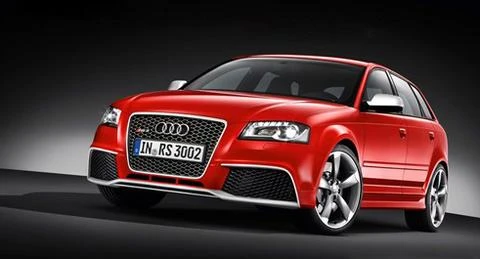

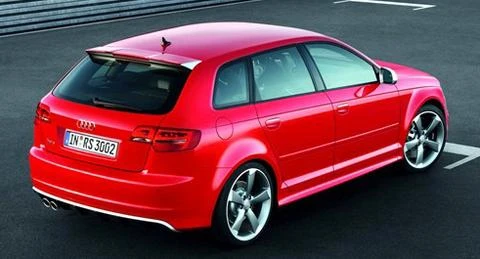


In terms of interior decoration, Audi RS 3 adopts all-black interior with leather sports seats. At the same time, compared with Audi A3, RS 3 is equipped with Audi’s new entertainment system. In addition, a large number of aluminum trim strips are used in the car to highlight the sport performance of the whole vehicle.


In terms of power, RS 3 is equipped with the same 2.5L TFSI five-cylinder engine as TT RS, which has a maximum power of 335 horsepower and a maximum torque of 450 nm. Equipped with a 7-speed dual clutch transmission and Quattro full-time four-wheel drive system, its 0-100km/h acceleration time is only 4.6 seconds.

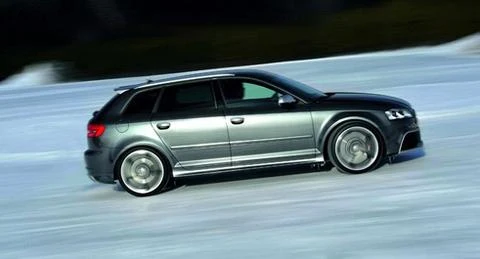
For this compact high-performance sports car, Audi engineers have also carried out lightweight treatment, with the vehicle weight of 1575kg. In order to reduce the body weight, RS 3 adopts new materials, in which the front and rear surround are all carbon fiber materials. The new car is equipped with high-performance ventilation brake discs and high-performance calipers.
● Audi‘s upcoming models: Rs 1, RS 7, RS Q3
Of course, in addition to the RS series models on sale and discontinued, Audi is also actively developing RS 1, RS 7 and RS Q3. The news that Audi is going to launch RS 1 has been circulating since 2010, and there has been news that Audi RS 1 will go on sale within this year, but it has not been officially confirmed by Audi.

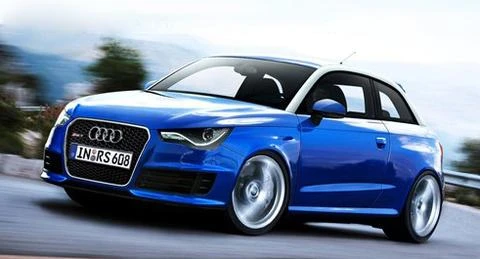
According to German media reports previously, Audi RS 1 may be equipped with a 2.0T engine and a four-wheel drive system. The maximum power of the engine is 220 horsepower, which is powerful enough for the current 2.0T engine.


As for the RS 7, according to the overseas media reports, RS 7 will be equipped with a new V10 twin turbocharged engine, and its maximum power is likely to exceed 580 horsepower. Such data has surpassed RS 7’s competitor Mercedes Benz CLS63 AMG’s 525 horsepower and 560 horsepower of BMW M6.


At the Beijing Auto Show this year, Audi also released the RS Q3 concept car. In terms of power, the RS Q3 concept car will be equipped with a 2.5 TFSI 5-cylinder engine, which is also used in the TT RS model. The engine is matched with a 7-speed S-Tronic dual clutch transmission and Quattro all-wheel four-wheel drive system. The maximum output power of the engine is 360 horsepower (265KW), and the acceleration time at 0-100km/h is only 5.2 seconds and the top speed is 265 km/h.
All the friends who know RS will have sincere admiration for its low-key character that can’t be kept low-key. In fact, from the beginning of RS 2, Audi RS series is doomed to be an extraordinary brand. Some of them are Porsche engines, and some of them are Lamborghini engines, so it’s not exaggeration to call them “supercars”.

